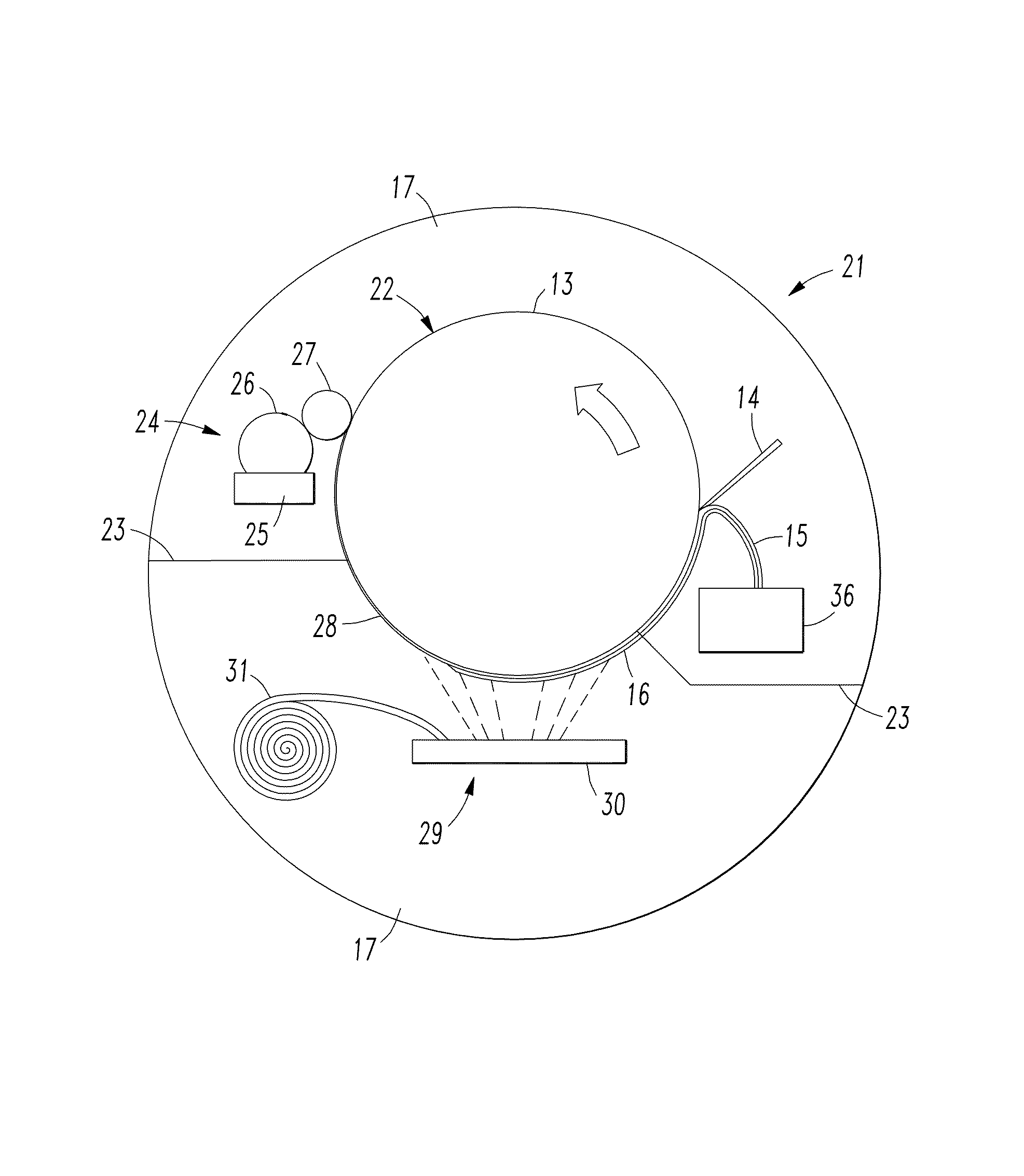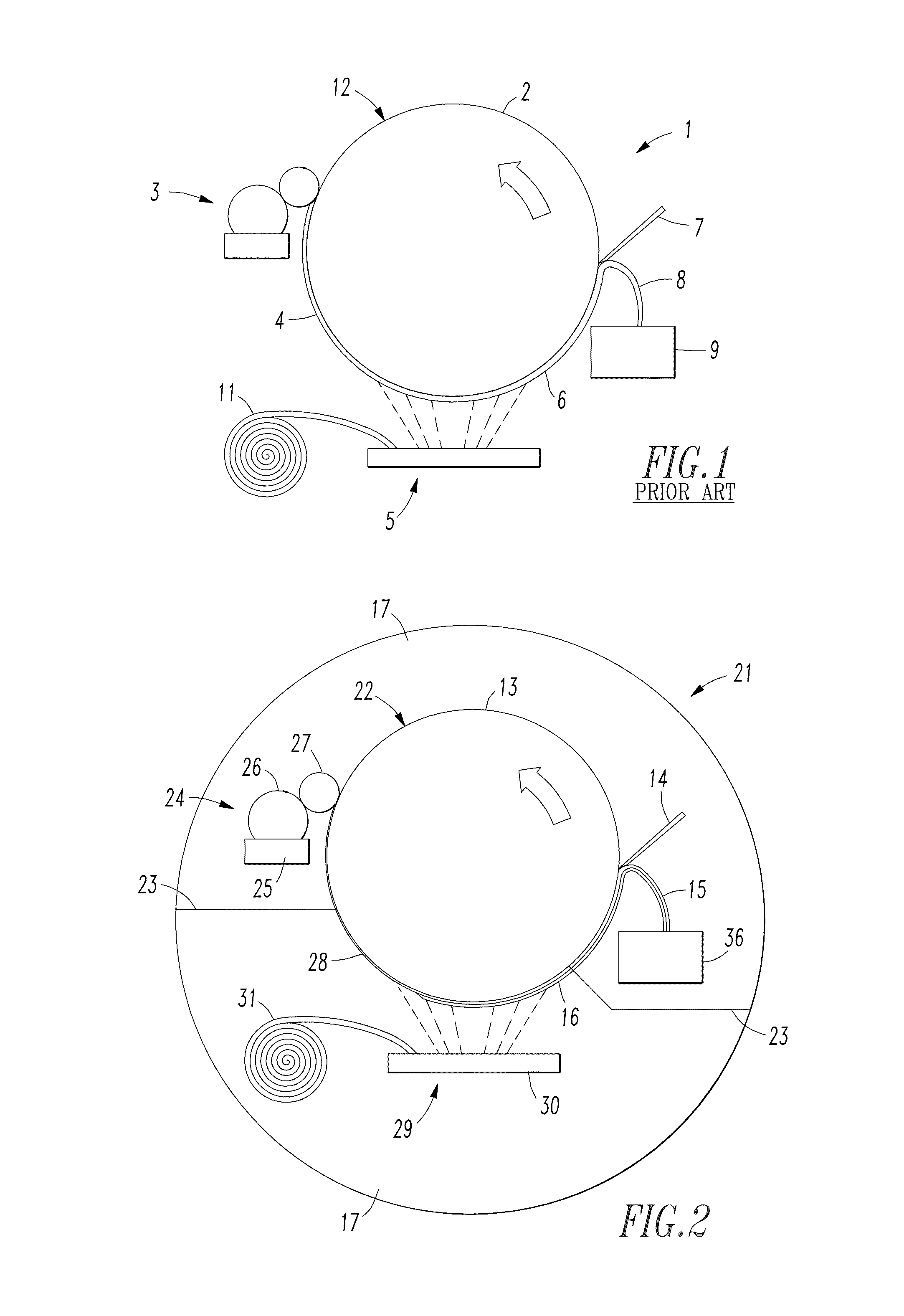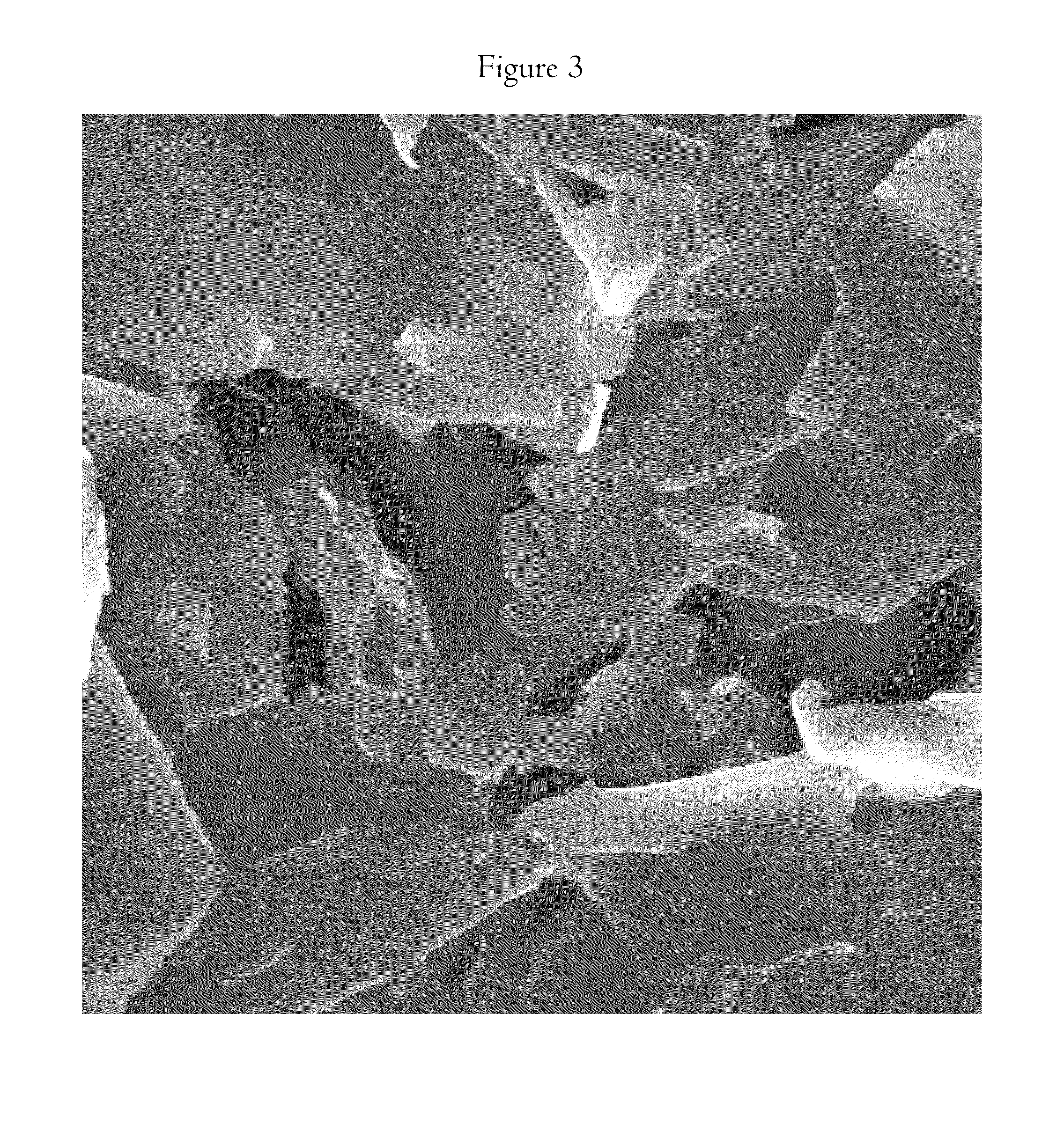Method for producing thin flake
a technology of thin film and thin film layer, which is applied in the direction of filament/thread forming, chemistry apparatus and processes, and material granulation, etc., can solve the problems of limited use of thin leaf metallic coatings, and difficulty in producing such thin leaf products, etc., to achieve the effect of substantially reducing or eliminating the thickness of the solidified layer
- Summary
- Abstract
- Description
- Claims
- Application Information
AI Technical Summary
Benefits of technology
Problems solved by technology
Method used
Image
Examples
example
[0034]A gravure coater applied a release agent comprising tung oil to a rotatable drum contained in a vacuum chamber having two subchambers. A metering roll ensured the thickness of the release agent on the rotating drum was about 5 μm. The surface of the coating drum was cooled to about 5° C. The release agent was coated in a first subchamber at a pressure of about 0.03 Torr. A second subchamber contained the applicator and was held at a pressure of about 5×10−5 Torr. The desired material was aluminum metal at 99.8% purity. The speed of surface of the rotatable drum was about 4 meters per second, and the evaporation of aluminum was synchronized to produce a metal film with an optical density of 2.2, that is, a thickness of about 30 nm. Aluminum was deposited for approximately 30 minutes. The aluminum formed a shiny layer on the liquid tung oil coating. The combination of the metal layer and tung oil was removed from the rotating drum using a doctor blade and the combination was col...
PUM
| Property | Measurement | Unit |
|---|---|---|
| thick | aaaaa | aaaaa |
| thick | aaaaa | aaaaa |
| thick | aaaaa | aaaaa |
Abstract
Description
Claims
Application Information
 Login to View More
Login to View More - R&D
- Intellectual Property
- Life Sciences
- Materials
- Tech Scout
- Unparalleled Data Quality
- Higher Quality Content
- 60% Fewer Hallucinations
Browse by: Latest US Patents, China's latest patents, Technical Efficacy Thesaurus, Application Domain, Technology Topic, Popular Technical Reports.
© 2025 PatSnap. All rights reserved.Legal|Privacy policy|Modern Slavery Act Transparency Statement|Sitemap|About US| Contact US: help@patsnap.com



